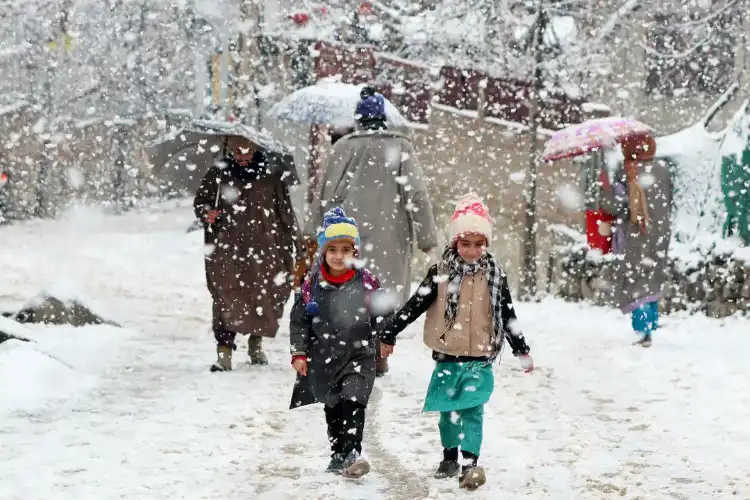
Kashmir is synonymous with tourism in the summers but for the locals, the winter comes with its myriad challenges. It’s when they have to fend against the extreme cold by using layers of warm clothing and woolen home furnishings, observing a different routine while for many people living in far-off places and higher reaches as their area gets cut off from the rest of the world for days, weeks due to heavy snowfall, winter throws a bigger challenge.
On Friday the Valley witnessed the first snowfall of Chillai Kalan and it cut off Kashmir valley with the rest of the land by air and surface transport. The 40-day Chillai Kalaan that began on December 21 is already halfway through. Chillai Kalaan'' meaning the big chill or the 40 days long period of the peak winter will end by the end of the month. This is the sharpest and most chilling period of every, followed by a 20-day Chillai Khurd, or the smaller (younger) spell, and followed by a 10-day-long Chilla Bacha (baby) culminating by the end o February.
Temperatures dip to minus 8 and for this reason, the educational institutions in Kashmir avail winter vacations from mid-December to the end of February.
.jpg) A shopkeeper selling dry fish and vegetables in Srinagar
A shopkeeper selling dry fish and vegetables in Srinagar
Though it comes with its challenges, Kashmiris welcome snowfall since they know that the accumulated snow in higher reaches freezes and melts later to sustain life in the summers.
Winters in Kashmir had often meant the frequent blockades of the only surface link Srinagar-Jammu national highway, curtailing the supply of essential commodities and all merchandise. However, the opening of two road tunnels on the Srinagar-National Highway (NH44) has minimized the blockades. The 11-km-long Chenani-Nashri tunnel was opened in April 2017, by-passing Patni Top, while 9 km long Navyug tunnel connecting Qazigund-Banihal, by-passing Jawahar Tunnel, was opened in April 2022.
People in Kashmir have had their traditional ways of fighting the winter chill and making stocks of essentials like rice, wood-charcoal for Kangris, woolen clothing, warm beddings, and furnishing. Kangri has been the age-old basic tool for fighting winter chill and it’s the basic tool for people in rural and urban areas to fight the chill. With the trend of concrete houses as against the mud-wood ones, well-off Kashmiri have adopted different means, like Hamams (rooms warming up by burning firewood underneath).
Though many heating appliances are available and also used by people, people mostly rely on traditional means for want of a dedicated power supply. Instead of electric blowers, Kashmiris opt for the fire-wood Bukhari to warm up houses. This was even common in offices.
.jpg) Kangris. personal firepot of each Kashmiri on sale in Srinagar
Kangris. personal firepot of each Kashmiri on sale in Srinagar
However, the traditional kerosene lamps for lighting homes have been replaced by new-age Inverter batteries and generators.
Interestingly, though vegetables are available in winter, the trend of cooking sun-dried vegetables in winter remains in vogue. It’s for sheer nostalgia and tradition that people keep stock of home-dried vegetables for use in the winter.
ALSO READ: Can Religion Unite the Humankind?
The people in Kashmir have their traditional ways to fight the odds of winter, particularly, when it is too cold during December and January. The Kashmiri is always upbeat over the passing of winter and marching towards early spring to summer saying “wande tchale, sheen galle, beyi iye bahaar”(Winter will go, snow will melt down and spring season will arrive) and has not been averse to the harsh winters.
